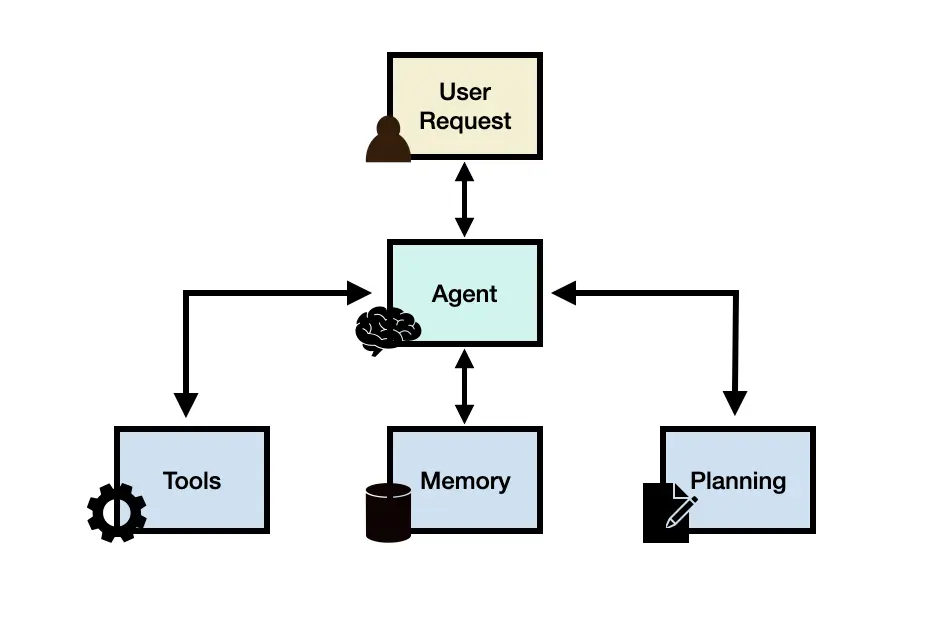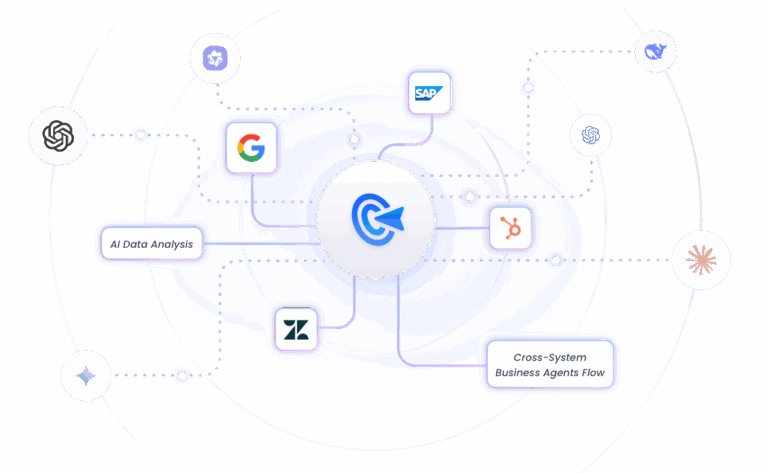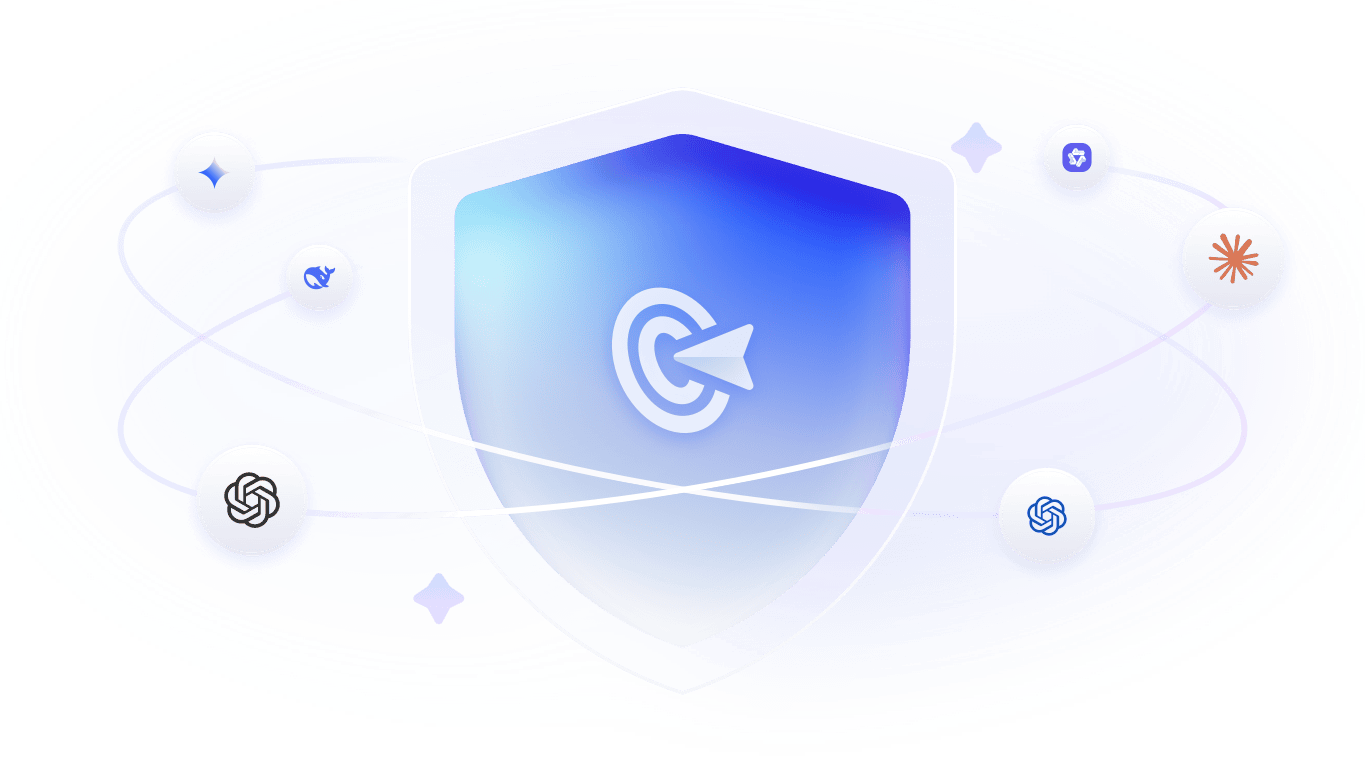LLM Agents 101: From Basics to Real-World Applications
Large language models have transformed how we interact with technology, offering fluent conversations and impressive reasoning. But what happens when those capabilities are paired with tools, memory, and goals?
Enter LLM agents—AI systems that can not only understand but also execute. In this article, we’ll break down what LLM agents are, how they work, key use cases across industries, and what tools you can use to build your own.
What Is an LLM Agent?
An LLM agent is a large language model enhanced with the ability to pursue goals and interact with external tools or environments. Think of a standard LLM as a brilliant brain that can reason and respond—an LLM agent gives that brain hands and feet, enabling it to take actions based on its own decisions.
Unlike traditional AI agents that rely on fixed rules or decision trees, LLM agents use natural language understanding to interpret instructions, plan steps, and adapt dynamically to new situations. They’re autonomous, context-aware, and capable of integrating new knowledge into real-time decision-making.
What Can LLM Agents Do?
LLM agents go beyond simple question-answering. They combine natural language understanding, reasoning, and the ability to take action—making them powerful tools across industries. Here are some of their core capabilities:
● Interpret Ambiguous Instructions
LLM agents can handle vague or high-level requests like “summarize key insights from these documents” or “find unusual patterns in the data,” and break them down into actionable steps.
● Execute Multi-Step Workflows
They can plan and perform complex, multi-stage tasks—such as researching a topic, generating a report, and sending it by email—without human intervention.
● Use External Tools
By connecting with APIs, databases, and web services, LLM agents can look up information, control apps, or automate tasks across systems.
● Adapt in Real-Time
Unlike rule-based systems, LLM agents can change their strategy mid-task based on new information, feedback, or unexpected errors.
● Bridge Human-Machine Understanding
They act as translators between human intent and machine execution, turning natural language into structured commands that systems can act on.
These abilities make LLM agents suitable for real-world use cases such as customer support automation, report generation, intelligent data analysis, and much more.
Core Components of LLM Agents
To understand how LLM agents operate intelligently and autonomously, it’s essential to break down their architecture. Here are the core building blocks that power an LLM agent:
1. Language Model (The Brain)
At the heart of every agent is a large language model. It handles natural language understanding, reasoning, and decision-making. This model processes user instructions, interprets context, and generates meaningful output.
2. Tool Use (Hands & Feet)
Agents can extend their abilities by connecting to external tools—such as web browsers, APIs, databases, or code interpreters. This allows them to interact with the digital world and perform real actions, not just generate text.
Example: An agent asked to book a flight might access a flight search API, filter results, and complete a booking—all autonomously.
3. Memory Module (Long-Term Context)
Memory enables agents to retain past interactions, preferences, and facts across sessions. With long-term memory, they can personalize responses, follow up on earlier tasks, and continuously improve their performance.
4. Planning Engine (Task Breakdown & Strategy)
Agents don’t just respond—they plan. This component allows them to break complex goals into subtasks, prioritize actions, and adapt their plans as situations change.
Example: If asked to “research competitors and summarize top 3 takeaways,” the agent might break this into: search > collect data > analyze > summarize.
5. ReAct Loop (Reason + Act)
Many agents use the ReAct framework, which combines reasoning and action in an iterative loop: Observe → Think → Act → Receive Feedback. This allows the agent to reflect before acting, and adjust its behavior based on outcomes.
Example: An agent diagnosing a system issue might query logs, hypothesize a cause, test a fix, and retry if needed.
These components work together to make LLM agents more than just chatbots—they are autonomous, adaptable systems capable of intelligent, goal-driven behavior.
How Do LLM Agents Work?
LLM agents operate through a structured, iterative workflow that enables them to handle tasks autonomously. Here's a typical process:

Step 1. Goal Identification
The process begins when the agent receives a user prompt or goal—such as “summarize this report” or “find trending keywords.” The agent interprets the instruction, identifying key objectives, constraints, and preferences.
Step 2. Planning
Next, the agent creates a plan by breaking the goal into smaller subtasks. It identifies which tools or resources are needed, anticipates potential obstacles, and decides the best sequence of actions to take.
Step 3. Action Execution
The agent performs actions using external tools or APIs—like searching the web, querying a database, running code, or sending an email. These tools allow the agent to move beyond language generation and take real-world steps.
Step 4. Observation & Feedback
After each action, the agent observes the outcome. Did the tool return the expected result? Was progress made? This feedback is used to adjust the next step.
Step 5. Iteration Until Completion
The agent repeats this cycle—plan, act, observe until the goal is achieved or it determines that it cannot proceed further due to limitations (e.g. missing tools or insufficient permissions).
Types of LLM Agents
LLM agents come in several types, each tailored to different use cases depending on complexity, autonomy, and collaboration needs:
Tool-using Agents: These agents are designed to interact with external tools, APIs, or plugins to accomplish tasks beyond text generation. For example, a research agent might use web search APIs, file parsers, and data analysis libraries to produce a comprehensive market report.
Autonomous Multi-step Agents: These agents can plan and execute complex, long-term tasks without human supervision. For instance, a project management agent could schedule milestones, assign tasks, monitor progress, and reschedule based on changing priorities all autonomously.
Multi-agent Systems (Collaborative Agents): In these systems, multiple specialized agents work together to solve complex problems. For example, a software development workflow might include a coding agent, a code-review agent, and a deployment agent. Each agent performs a distinct role and communicates with others to complete the project as a team.
Task-specific vs. General-purpose Agents: Task-specific agents are optimized for narrow domains, like customer service or medical Q&A. In contrast, general-purpose agents are flexible and capable of handling a wide range of tasks across domains. The right choice depends on your needs—precision and efficiency vs. versatility.
Comparison of LLM Agent Types
| Agent Type | Autonomy Level | Scope | Example Use Case |
|---|---|---|---|
| Tool-using Agents | Low to Medium | General | Using APIs or plugins to search, calculate, or fetch data |
| Autonomous Multi-step Agents | High | Narrow to Broad | Planning and executing a multi-step task like report generation or workflow automation |
| Multi-agent Systems | High | Broad | Multiple agents working together—e.g., coding, reviewing, and deploying software |
| Task-specific Agents | Medium | Narrow | Chatbots for customer service or FAQ resolution |
| General-purpose Agents | Medium | Broad | Virtual AI assistants capable of handling diverse queries |
How Do Enterprises Use LLM Agents?
LLM agents are increasingly being adopted across enterprise departments to streamline workflows, enhance decision-making, and boost productivity. Key use cases include:
Automated Support Workflows
LLM agents can handle customer support tasks such as triaging tickets, answering routine inquiries, and escalating complex cases to human representatives. By accessing knowledge bases, customer history, and product information, they deliver accurate, context-aware responses—improving both response time and customer satisfaction.
Sales and Marketing
In marketing, agents can generate personalized content, run outreach campaigns, and analyze engagement data to refine targeting strategies. Sales-focused agents help qualify leads, schedule meetings, and even recommend products tailored to customer needs—allowing teams to scale efforts without sacrificing personalization.
Internal Operations and Tools
Operational agents assist with tasks like data extraction, document summarization, and report generation. They process large volumes of information, identify patterns, and present key insights in a digestible format—enabling faster and more informed decision-making across departments.
Developer Productivity
In engineering teams, development agents can automate tasks such as code reviews, testing, and documentation generation. They detect bugs, suggest fixes, and ensure code quality standards are maintained—accelerating development cycles and reducing human error.
While LLM agents unlock efficiency, enterprises must also address challenges related to privacy, security, and scalability. Successful deployment requires secure API access, strong data governance, and a robust infrastructure to support large-scale usage—ensuring performance and reliability remain uncompromised.
Building Powerful LLM Agents with GoInsight.AI
LLM Agents are transforming from passive responders into autonomous actors capable of performing complex tasks. To build such intelligent agents, you need more than just a powerful language model—you need a comprehensive, scalable infrastructure.
GoInsight.AI is an enterprise-grade automation platform designed to help teams rapidly create intelligent, action-oriented LLM agents with minimal friction and high reliability.

With features like:
- End-to-end visual orchestration
- Multi-agent coordination and logic-based task execution
- RAG integration for contextual memory and knowledge grounding
- Granular security controls, auditing, and explainability
GoInsight.AI empowers organizations to build agents that not only reason, but take real action at scale. Whether you're automating workflows or enabling human-AI collaboration, GoInsight.AI provides the foundation for robust, production-ready agents.
Conclusion
The era of passive AI is behind us. LLM agents are bridging the gap between language and action, turning static systems into proactive collaborators. They're not just smart tools—they’re digital teammates that can adapt, reason, and execute.
As these systems mature, one thing becomes clear: the organizations that embrace LLM agents today will shape the future of work tomorrow. Tools like GoInsight.AI make it easier than ever to build powerful, enterprise-ready LLM agents.






Leave a Reply.